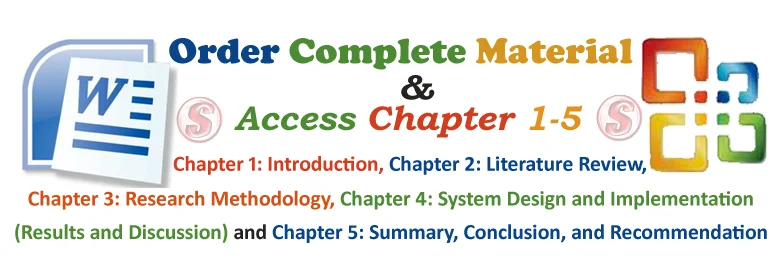Introduction
1.1 Background of the study
Organizational communication includes both interpersonal relationship and information exchange process by different levels. As an independent variable, organizational communication influences both organizations and individuals. This study aimed to investigate the impact of top-down communication on career satisfaction. The sample consisted of 205 office managers, executive assistants and secretaries working in different sectors in Istanbul. 16 cases were excluded due to missing data. The data form 189 participants were analyzed. Career Satisfaction Scale (Greenhaus, Parasuraman & Wormley, 1990) and Top-Down Communication Scale (Downs & Hazen, 1977) were data collection instruments. The quantitative paradigm, including descriptive, relational, and comparative models was employed. In analyzing data, a set of correlation, analysis of variance, and multiple regression techniques were employed. Results reveal that top-down communication is positively and significantly correlated with career satisfaction (r = .457, p< .01).
Top-down communication explains 20.9 % of the variance on career satisfaction. Institution explains additionally 4.7% variance on career satisfaction. Top-down communication was categorized as low and high top-down communication scores. When top-down communication groups compared, significant mean differences of career satisfaction were found. As age, occupation, institution, educational level and years in the present group differ, significant mean differences both on top-down communication and career satisfaction is found. Various interactions of organizational communication dimensions with individual and organizational factors are found out day by day.
It is clear that organizational communication contributes not only to the performance and effectiveness of the organization but also the attitudes, values, behaviors of the individuals within the organization (Simsek, 2011). Organizational communication consists of both individual and interpersonal communication levels. This study aims to evaluate organizational communication in terms of interpersonal hierarchical relationship. Organizational communication forms employee’s attitudes towards the organization
1.2 Problem statement
Without doubt a high percentage of inefficiency and misunderstanding in organization can be traceable to inadequate and insufficient understanding of information.
Since Top-down Information communication is said to be the nervous system of any organized group. Davis (2002).
No doubt there are some problems associated with effective Top-down Information communication on organizational performance these include.
- Poor listening and premature evaluation when people do not listen carefully to what is being said to them, this will in turn result to premature evaluation
- Information overload: When information is too much it will lead to misinterpretation
- Difference in status and power between the sender and the receiver of information is another barrier to effective Top-down Information communication.
- Selective perception: people tend to perceive what they expect to perceive in Top-down Information communication, it means that they hear what they want to hear and ignore other relevant information.
1.3 Purpose of the study
The purpose of this study is to examine the factors affecting Top-down Information communication as a means of enhancing innovation in Organizations. Specifically the study:
- To assess the effect of Top-down Information communication on the field of management.
- To identify the existing Top-down Information communication barriers in an organization.
- To access the contribution and important role played by effective Top-down Information communication in an organization towards enhancing production and profitability.
- To find out what Top-down Information communication is all about, how it is done, what instruments are used and what qualities can make up a system of Top-down Information communication effective in an organization.
- To ascertain and identify the problems of ineffective Top-down Information communication and to suggest possible solution so as to achieve better Top-down Information communication network in an enterprise.
- To identify the possible barriers that lead to Top-down Information communication breakdown.
- To know if there is any relationship between effective Top-down Information communication and performance of employees.
- To know if there is any relationship between Top-down Information communication and effective management.
1.4 Significance of the study
This extended study would be of benefit to academicians and the students of business administrative studies at all levels and member of the public who would stand to benefit from the work, especially managers, administrative officers both in the public and private sector. Again it can also be used by researchers as prelude to another research or reference material for use by entrepreneurs who may find the work useful.
Besides, it is my belief that this study will be found useful by the enterprise and consequently other organizations which may wish to achieve their established objectives. This is because Top-down Information communication in both private and public undertaking be it non-profit or profit motive play a vital role in enhancing productivity due to the fact that it integrates the management functions in an organization. Since it influence action towards the welfare of organization. Indeed, Top-down Information communication also brings about utilization, improvement and retention of various organization manpower (labour force)
1.5 Study hypothesis
The study hypothesis is:
HO: Top-down Information communication in an organization has no significant effect on production and profitability
HO2: There is no significant difference between barriers that lead to Top-down Information communication breakdown
1.6 Scope and Limitations of the Study
The study scope is limited to examine the factors affecting Top-down Information communication as a means of enhancing innovation in Organizations in chevron Nigeria. Limitation faced by the research was limited time and financial constraint
1.7 Definition of Basic terminologies
Organization:
Is defined as a group of people with a common goal to achieve
Population:
This is defined as a group of people which are similar in one or more ways and which form the subject of study in a particular study
Sample:
Sample is defined as a fractional represent actives of an object from where inferences is drawn
Information:
Information are processed data or result from logical manipulation of data which allows decision making
Subordinate:
Are those low rank workers that carryout the duties assed to them
1.8 Organization of study
The study is grouped into five chapters.
Chapter one gives an introduction to the study.
Chapter two gives a review of the related literature.
Chapter three presents the research methodology;
Chapter four presents the data analysis as well as interpretation and discussion of the results.
Chapter five gives a summary of findings and recommendations.




